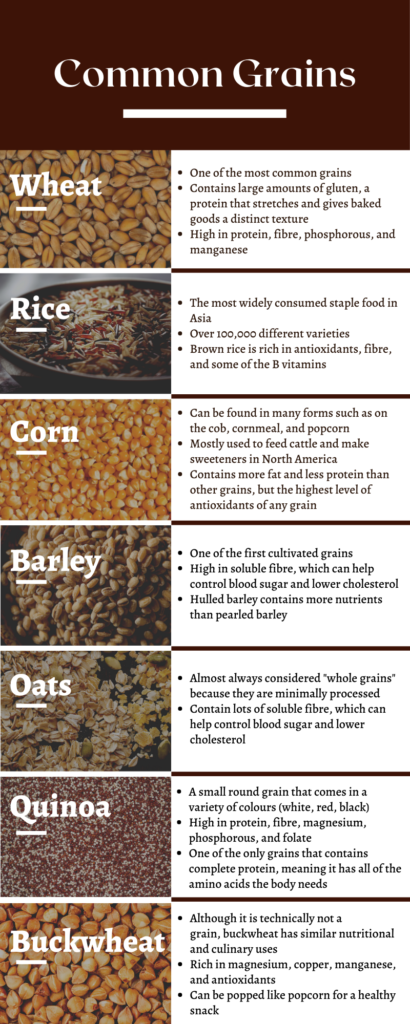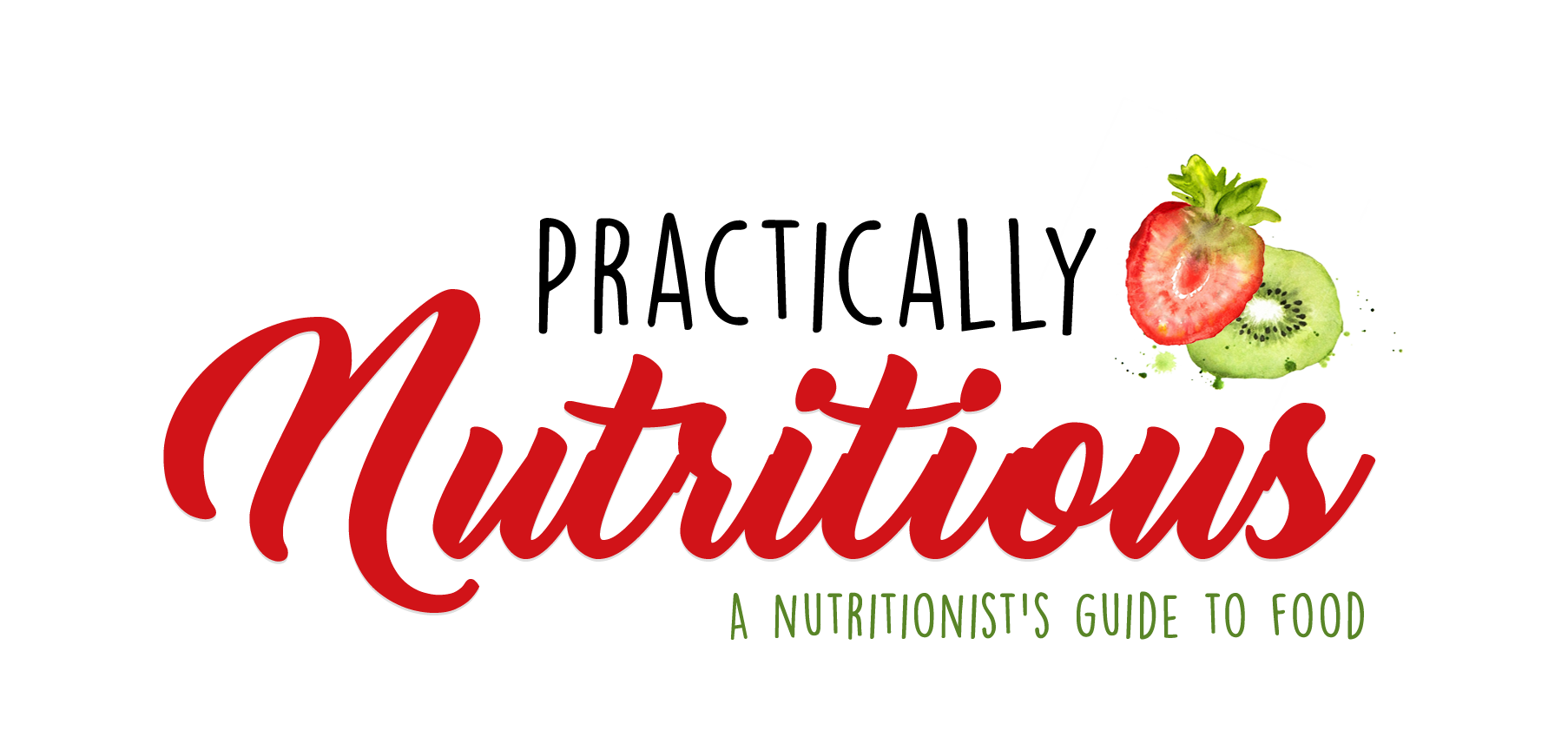So, what are grains? Also called cereals, grains are edible seeds that come from plants. Think foods like corn, rice, wheat, and barley, which are coincidentally the most popular grains today. You can really find grains everywhere – they are a major food crop in all parts of the world and are the base of almost every cuisine, from the Mexican tortilla to Chinese rice and the French baguette. They are often processed and made into foods we all recognize, such as bread, pasta, and breakfast cereals.
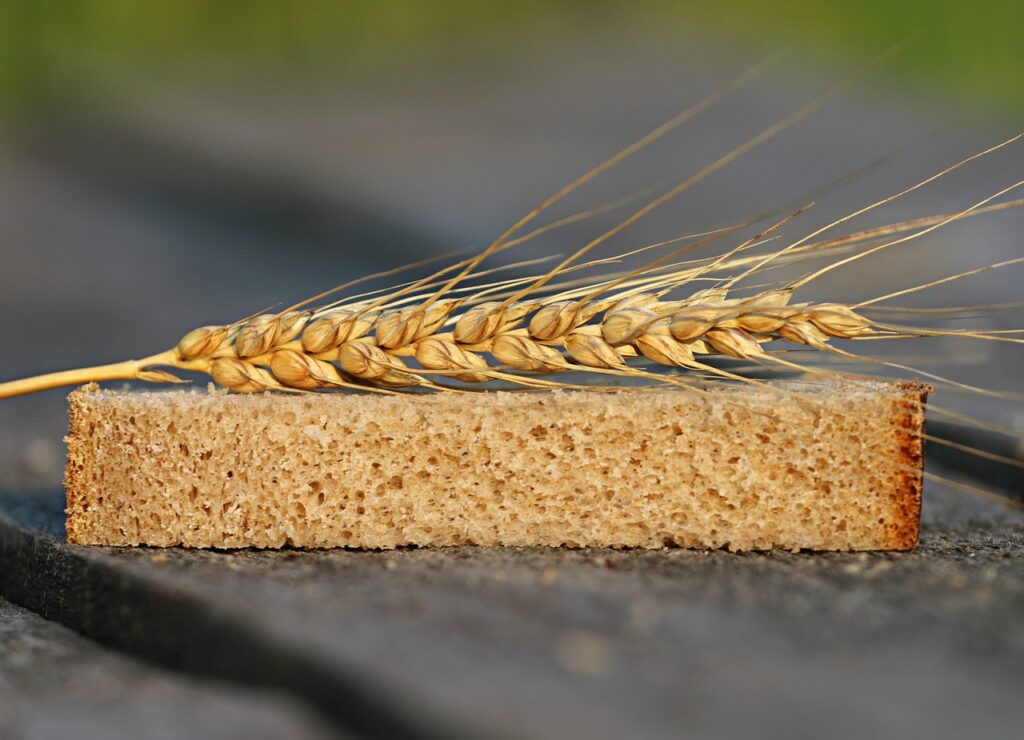
How much grain products should I eat?
Canada’s Food Guide used to recommend a specific number of daily grain servings. However, that changed recently and now there is no longer a specific number recommended. PHEW! I can’t say that I ever counted my daily servings of grains. So what should you do instead? I suggest to use the plate method currently recommended by Canada’s Food Guide. Simply, grains and grain products should make up about a quarter of your plate/meal. Should this be every meal? Ideally yes, but don’t bend over backwards to make this work, it’s more of a general guideline.
What types of grains should I eat?
Eat whichever grains you like the most! There is no one grain that is a miracle cure, just like there is no one grain that is horrible for your health. In general, try to have a variety of grains in your diet and aim for most of them to be whole grains rather than refined grains. In terms of grain products like breads and cereals, try to choose ones without added sugars, especially if sugar is high on the list of ingredients.
Examples of whole grains
Brown rice, whole wheat bread, whole pasta, hulled barley, oatmeal
Examples of refined grains
White rice, white bread, white pasta, de-germed cornmeal
Whole grains vs. refined grains
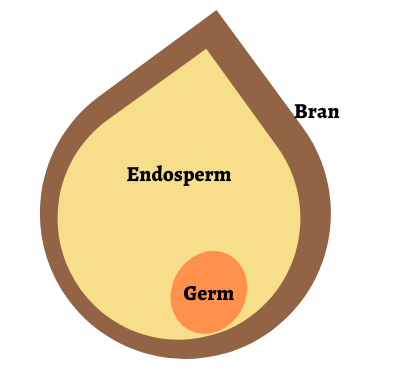
A grain seed has three parts: bran, endosperm and germ. The bran (the outer layer) and the germ (the innermost layer) are both removed during the refining process. The endosperm, the largest part of the seed, is the only part that is left in refined grains. Unfortunately, the bran and germ contain a lot of the nutrients, so those are lost during refining. Refining does make cooking grains easier and makes them last longer, but it takes away a lot of their health benefits.
The health benefits of whole grains
It is recommended that at least half of the grain products you eat daily should come from whole grains. That means whole grain bread, pasta, cereals, etcetera. Why bother?
- More fibre: whole grains contain substantially more fibre than refined grains, which helps keep you full, reduces cholesterol, regulates blood sugar, maintains healthy bowel movements, and reduces the risk of colon cancer.
- More protein: grains lose about 25% of their protein when they are refined, which means whole grains have higher protein content. Our bodies use protein to build and repair tissues, and it is a building block of bones, muscle, cartilage, skin, and blood.
- Note: although whole grains are a great source of protein, most grains contain incomplete protein. This means that grains only contain some of the amino acids our bodies need. This is why grains should be paired with another food such as legumes (beans, lentils, and chickpeas are examples) in order for the body to get all of the protein that it needs.
- Vitamins and minerals: whole grains are rich in many B vitamins, which help the body use energy effectively and maintain healthy skin, hair, muscles, and the immune system. They also contain essential minerals like iron, magnesium, and phosphorous, all of which are important for many functions, like repair and growth.
Tips for choosing grains:
- Eat a variety of grains, and try out less common ones like buckwheat, quinoa and millet.
- For processed grain products like breakfast cereals, look at the nutritional label and choose those that are low in sugar, fat, and salt.
- There is a difference between whole grain and multigrain breads. Whole grain breads are made from whole grains, while multigrain breads contain different types of grains, but not all whole. When in doubt, choose whole grain instead of multigrain!
The “big bad guy”: gluten
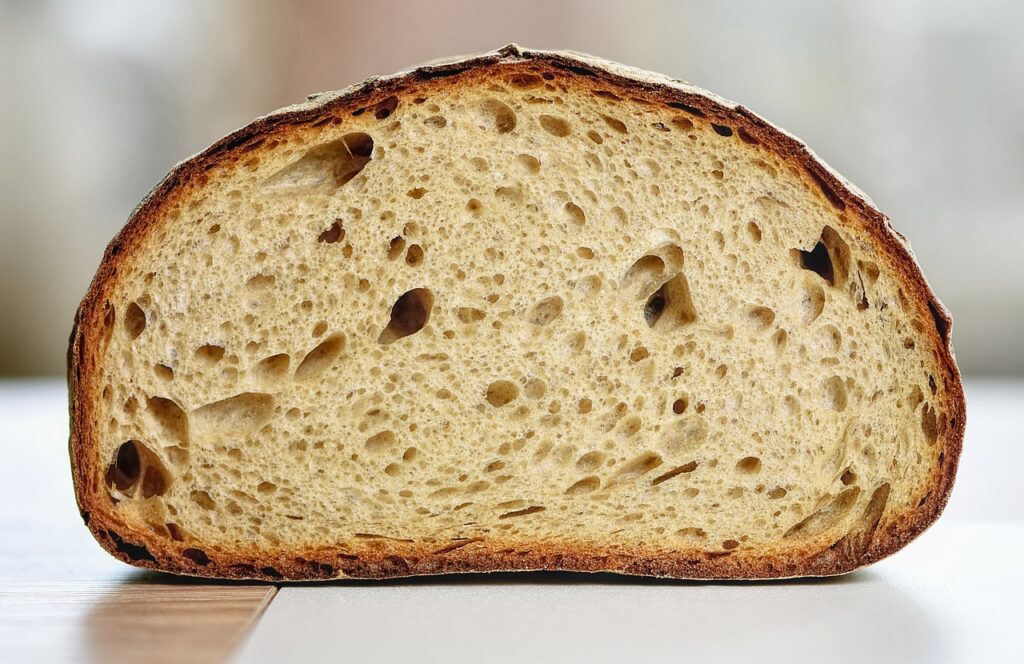
You’ve almost certainly heard about gluten, and probably not in a positive way. Let’s take some time to clear that up. Gluten is a protein found in wheat, barley and rye that gives breads a chewy and elastic texture (think a nice chewy baguette). Some people have gluten intolerances or allergies and need to avoid gluten-containing products. An example is people with Celiac Disease, who must avoid eating even small amounts of gluten. But most people can eat gluten, and contrary to popular belief it is not bad for you. In fact, people who follow a gluten-free diet without actually needing to are risking not getting all of the nutrients they need because this diet is fairly restrictive. Also, some foods that are labeled as gluten-free are worse for your health because they contain added sugars and fat. A gluten-free diet is only best for those people who really need it (those with intolerances/allergies).
Interested in grain recipes? Check out some of my recipes below
See the infographic below if you are interested in learning about some common grains!
